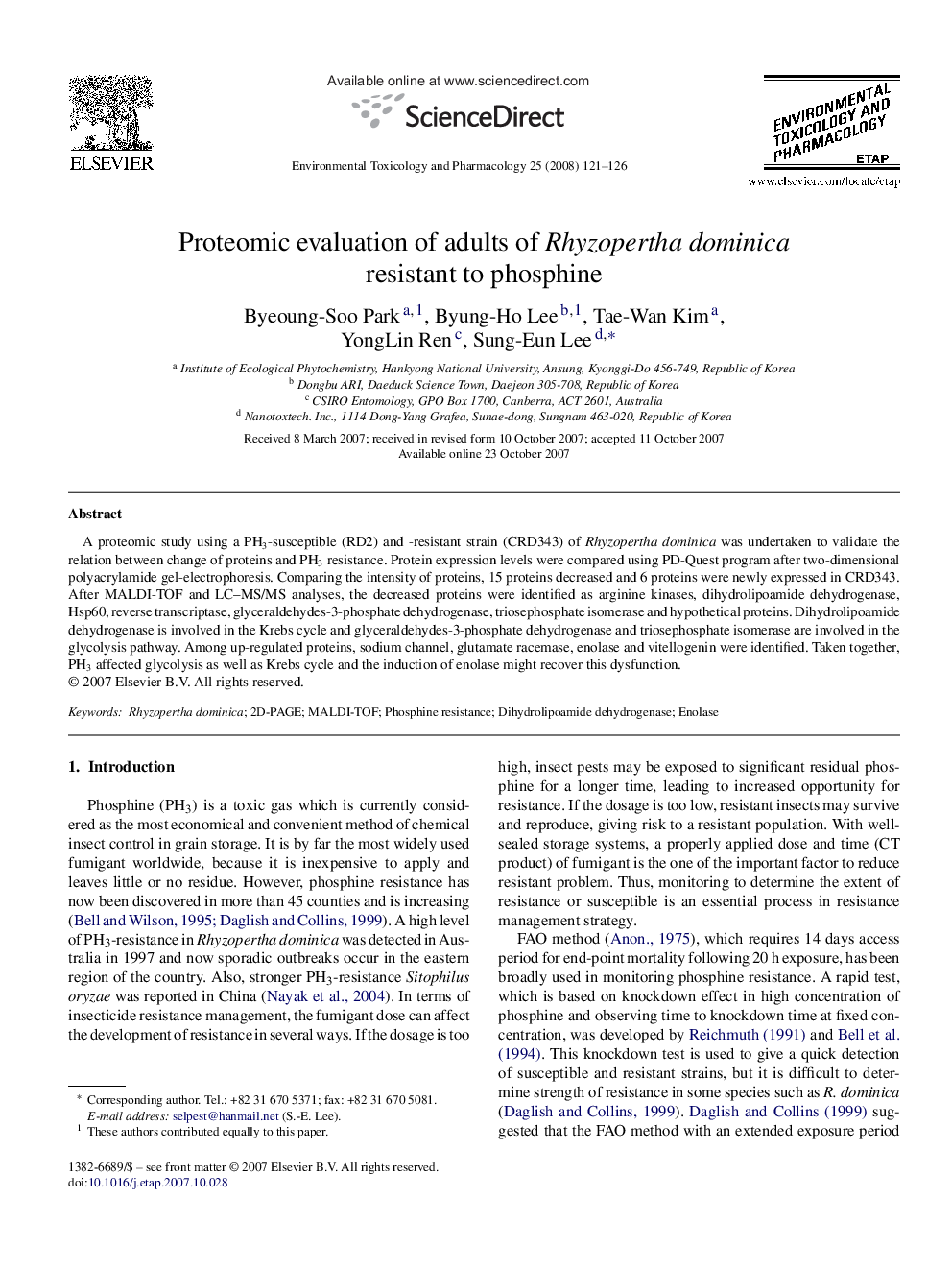| Article ID | Journal | Published Year | Pages | File Type |
|---|---|---|---|---|
| 2584434 | Environmental Toxicology and Pharmacology | 2008 | 6 Pages |
A proteomic study using a PH3-susceptible (RD2) and -resistant strain (CRD343) of Rhyzopertha dominica was undertaken to validate the relation between change of proteins and PH3 resistance. Protein expression levels were compared using PD-Quest program after two-dimensional polyacrylamide gel-electrophoresis. Comparing the intensity of proteins, 15 proteins decreased and 6 proteins were newly expressed in CRD343. After MALDI-TOF and LC–MS/MS analyses, the decreased proteins were identified as arginine kinases, dihydrolipoamide dehydrogenase, Hsp60, reverse transcriptase, glyceraldehydes-3-phosphate dehydrogenase, triosephosphate isomerase and hypothetical proteins. Dihydrolipoamide dehydrogenase is involved in the Krebs cycle and glyceraldehydes-3-phosphate dehydrogenase and triosephosphate isomerase are involved in the glycolysis pathway. Among up-regulated proteins, sodium channel, glutamate racemase, enolase and vitellogenin were identified. Taken together, PH3 affected glycolysis as well as Krebs cycle and the induction of enolase might recover this dysfunction.
